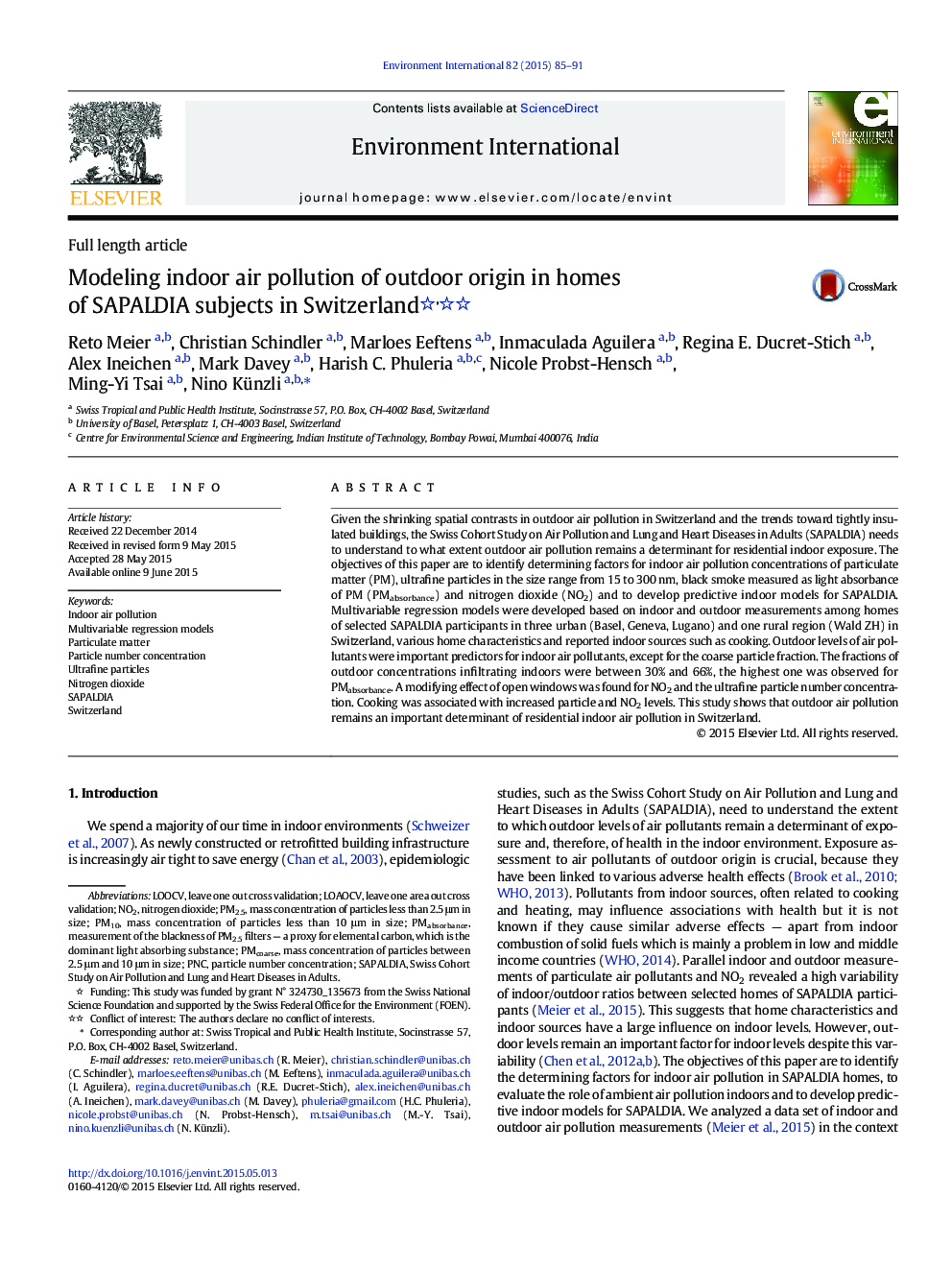| Article ID | Journal | Published Year | Pages | File Type |
|---|---|---|---|---|
| 4422679 | Environment International | 2015 | 7 Pages |
•Indoor air pollution prediction models have been developed for SAPALDIA homes.•Outdoor levels were important predictors for indoor air pollutants, except for PMcoarse.•Between 30% and 66% of outdoor concentrations infiltrated indoors.•The highest influence from outdoor levels was observed for PMabsorbance.•Open windows modified the outdoor influence of particle number concentration and NO2.
Given the shrinking spatial contrasts in outdoor air pollution in Switzerland and the trends toward tightly insulated buildings, the Swiss Cohort Study on Air Pollution and Lung and Heart Diseases in Adults (SAPALDIA) needs to understand to what extent outdoor air pollution remains a determinant for residential indoor exposure. The objectives of this paper are to identify determining factors for indoor air pollution concentrations of particulate matter (PM), ultrafine particles in the size range from 15 to 300 nm, black smoke measured as light absorbance of PM (PMabsorbance) and nitrogen dioxide (NO2) and to develop predictive indoor models for SAPALDIA. Multivariable regression models were developed based on indoor and outdoor measurements among homes of selected SAPALDIA participants in three urban (Basel, Geneva, Lugano) and one rural region (Wald ZH) in Switzerland, various home characteristics and reported indoor sources such as cooking. Outdoor levels of air pollutants were important predictors for indoor air pollutants, except for the coarse particle fraction. The fractions of outdoor concentrations infiltrating indoors were between 30% and 66%, the highest one was observed for PMabsorbance. A modifying effect of open windows was found for NO2 and the ultrafine particle number concentration. Cooking was associated with increased particle and NO2 levels. This study shows that outdoor air pollution remains an important determinant of residential indoor air pollution in Switzerland.
